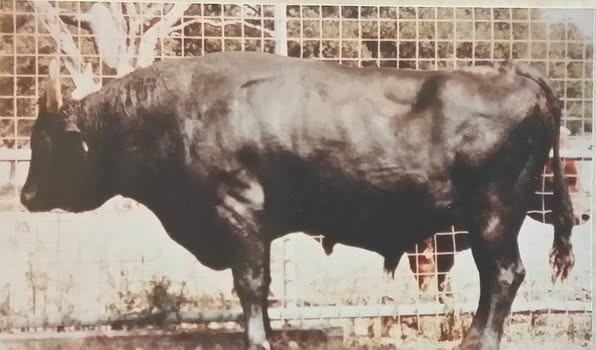

The term “American Wagyu” is used to describe the combining of Japanese genetics (Fullblood) with American ranching practices of crossbreeding for hybrid vigor producing an animal known as an F1 cross (50% Wagyu, 50% Angus or other animal).
In 1976, Morris Whitney, a researcher at Colorado State University imported four Wagyu bulls – two black (Mt. Fuji and Mazda) and two red (Judo and Rueshaw). These bulls were crossbred with Angus, Holstein, and other American breeds with the goal of improving meat quality. Crossbreeding attempts to pull out the best traits of both breeds. These bulls were later resold to Wagyu Breeders Inc. No additional exports from Japan occurred until 1991 at which time semen from another bull was exported. Up to this time, all breeding were with domestic cattle females as no females had been exported from Japan. Through continued breeding, the closest American animal to a Fullblood Wagyu was 63/64 Wagyu.
In 1993, Japan allowed the export of a small number of Japanese Black females allowing the first fullblood Wagyu breeding program to commence in the US. Between 1994-1997, they continued to allow the export of live animals, both Black and Brown, until they banned further exports in 1997. By the date of the import ban, 183 live animals had been exported with semen or embryos of another 28. Roughly 30 bulls and 153 Fullblood Wagyu females were allowed to be exported before Japan declared them a “National Treasure.”
One of the first importers was the Mannett Group (later World K’s). Their famous bloodlines include Suzutani, Rikitani, and Okutani (females) and Michifuku and Haruki II (bulls). They exported genetics to Australia that formed the basis of its breeding programs.
For a variety of reasons, Wagyu as a breed in the US did not take off as expected. By U.S. standards, the breed was considered too small and took too long to bring to market compared with other breeds. Why raise an animal that took 30-36 months to bring to market when you could raise another breed in 20 or less? Even with crossbreeding, time to market and carcass weight continued to be factors limiting the growth and development of the herd. Even today, American breeds continue to dominate the beef market. Bigger is better, or so they thought. As breeders continued working on genetics and the use of data driven herd management software became the norm, they started to overcome the economic side of the equation. Time to market decreased with targeted feed management and continued development of genetics gave birth to F1 crosses that developed more marbling in less time. Those F1’s crossed with Angus carried the traits and taste of the Angus while at the same time the tenderness and marbling of the Fullblood Wagyu.
To further the success of the breed, in 1990, the American Wagyu Association was formed to standardize the American Wagyu Breed. At the time, only F1 crosses existed. The latest statistics show that there are some 40,000 Wagyu influenced cattle in the US and fewer than 5,000 Fullblood Wagyu. The Association classifies U.S. Wagyu into four categories: Fullblood (100% with both parents traceable to Japanese lineage); Purebred (>93.75% Wagyu parentage); F1 Crossbred (50% Wagyu parentage); F2/F3 (75-87% Wagyu breeding generations).
In America, Wagyu has come into its own as a marketed beef product. However, Wagyu sold in stores isn’t the same as in Japan where strict labeling laws limit the ability to mislead consumers. Meaning, in America, buyer beware. Labeling laws give sellers a lot of room to describe their product. Calling their product Wagyu is like calling your product Organic. It has “cachet”! But Is it actually what you think it is? What is marketed as Wagyu might be only 5% Wagyu. A popular restaurant markets a Wagyu Burger. In reality, it has at most 26% Wagyu meat in it (52% American Wagyu and 48% ground beef according to a google search). Would you buy it if they marketed it as a 26% Wagyu Steakburger. Maybe. So remember, when you see a Wagyu burger selling for $15 on a menu, it doesn’t mean it is a Fullblood or even an F1 Wagyu burger. It might be an F1 burger, a truly delicious 50% Wagyu burger, or it might just have some Wagyu meat in it. How much depends on the price! A Fullblood burger would sell for much more and cooked right, would be the best burger you would have in your life!
Link to more information of the foundation animals that started the American herd: Foundation Wagyu cattle breed animals that were exported from Japan in 1976 and during the early 1990s.
At Mossyrock Wagyu, we market only FullBlood Wagyu at this time. We are working on an F1 program to give our customers a choice. We hope you give us a try!
GET 10% OFF YOUR FIRST ORDER
